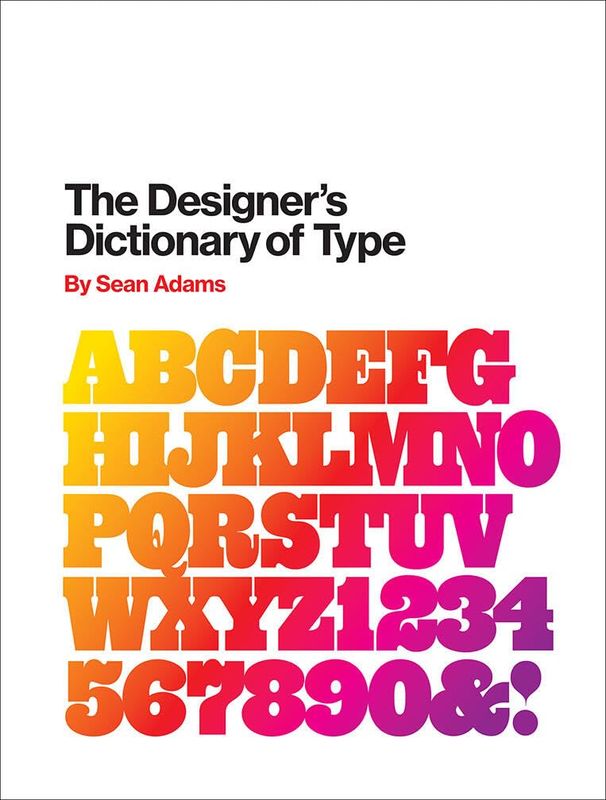Designing for People Book Summary
In 'Designing for People', Henry Dreyfuss lays the groundwork for human-centered design, championing the idea that products should serve people’s needs and enhance their experience. Through insightful case studies and engaging anecdotes, Dreyfuss reveals how understanding human behavior can lead to innovative and functional designs. He shares practical methods for observing and interpreting user interactions, emphasizing the importance of empathy in the design process. This book is not just a manual for designers; it's a fascinating exploration of the relationship between humans and the objects they use. Will Dreyfuss' principles inspire you to rethink the way we interact with the world?
By Henry Dreyfuss
Published: 2003
"Good design is a lot like clear thinking made visual."
Book Review of Designing for People
A cult read amongst designers for more than half a century, this text is the manifesto of America's greatest industrial designer and the pioneer of a design approach that put people first. Dreyfuss was the designer of the first answering machine, the Hoover vacuum cleaner, the Bell telephone, and much more.
Book Overview of Designing for People
About the Book Author
Henry Dreyfuss
Henry Dreyfuss was a prominent American industrial designer known for his innovative work in product design and user-centered design philosophy. He was instrumental in designing iconic everyday objects, including the Honeywell thermostat and the Western Electric model 500 telephone. Dreyfuss's writing often reflects his belief in the importance of ergonomics and the user experience, emphasizing functionality, simplicity, and aesthetic beauty. Notable works include 'Designing for People', where he shares his insights on design and its impact on human interaction with products. His approach combined practicality with artistic sensibility, making his work timeless and influential in the field of industrial design.
Book Details
Key information about the book.
- Authors
- Henry Dreyfuss
- Published
- January 2003
- Publisher
- Skyhorse Publishing Inc.
- ISBN
- 1581153120
- Language
- English
- Pages
- 289
- Genres
- Design ThinkingDesign
Purchase Options
Support local bookstores: BookShop gives a portion of each sale to independent bookshops!
Similar books you might like →
A Pattern Language Book Summary
"A Pattern Language" introduces a revolutionary approach to architecture and design, emphasizing the harmony of built environments with human needs. The authors present a collection of 253 patterns that provide practical solutions for creating livable spaces, from the scale of a room to entire communities. Each pattern encapsulates observations and wisdom drawn from nature and cultural practices, urging designers to foster deeper connections between people and their surroundings. This book challenges conventional design principles, inviting readers to rethink how spaces influence human interaction and well-being. Dive into a world where every structure tells a story and transforms everyday life into an art form.
An Essay on Typography Book Summary
In 'An Essay on Typography,' Eric Gill explores the art and craft of type design, revealing how typography shapes our perception of written language. Through a blend of philosophical musings and practical insights, Gill argues that type is not just a tool for communication, but an integral aspect of visual culture. He challenges conventional approaches and invites readers to appreciate the aesthetic and ethical implications of typographic choices. This thought-provoking essay raises questions about the role of the designer in society and the impact of typography on our daily lives. Dive into Gill's world to uncover the beauty and power of letters that often goes unnoticed.
Better Web Typography for a Better Web Book Summary
In 'Better Web Typography for a Better Web,' Matej Latin unveils the transformative power of typography in web design. He delves into the principles of effective type, demonstrating how thoughtful choices can enhance user experience and engagement. The book is packed with practical tips and real-world examples to help designers craft visually stunning and readable websites. Latin's insights challenge conventional norms, urging readers to rethink their approach to typography. This essential guide equips both aspiring and seasoned designers with the tools to elevate their craft and create a more beautiful web.
The Designer's Dictionary of Type Book Summary
Delve into the fascinating world of typography with 'The Designer's Dictionary of Type' by Sean Adams. This comprehensive guide unravels the intricacies of typefaces, revealing their unique personalities and historical contexts. Each entry offers insights that inspire creativity and enhance design skills, making it an essential reference for both novice and seasoned designers. With stunning visual examples, the book encourages a deeper appreciation for the art and science of type. Discover how the right type can transform your work and captivate your audience!
Type on Screen Book Summary
In 'Type on Screen,' Ellen Lupton explores the vibrant world of typography in the digital age, revealing how type shapes our visual culture and communication. With a keen eye for design, she uncovers the dynamics between text, screen, and viewer, making the complex art of typography accessible to all. Through engaging examples and insightful commentary, Lupton challenges readers to rethink the role of type in their everyday lives. This book is not just a guide for graphic designers—it's an invitation for anyone to appreciate the beauty and functionality of words on a screen. Discover how the elegance of letterforms can influence perception and impact in ways you never imagined!
The Design of Everyday Things Book Summary
In 'The Design of Everyday Things', Don Norman reveals the hidden principles behind effective design that shapes our everyday interactions. He explores the psychological underpinnings of how we perceive and interact with objects, highlighting the importance of usability and user-centered design. Through captivating examples, Norman illustrates how poor design can lead to frustration, while thoughtful design enhances our experience. This book challenges readers to rethink the functionality of everyday items, making them consider the design choices behind the objects they encounter. Ultimately, it invites us to demand better designs that cater to our needs, making the mundane extraordinary.
Don't Make Me Think, Revisited Book Summary
In 'Don't Make Me Think, Revisited', Steve Krug presents a timeless guide to web usability, challenging the notion that users read websites thoroughly. With humor and clarity, he emphasizes the importance of intuitive design, advocating that simplicity trumps complexity. Krug's insights encourage designers to prioritize user experience, making navigation as effortless as possible. Through practical examples and actionable advice, he unveils common pitfalls to avoid. This essential read will transform the way you think about designing websites and engaging users—are you ready to rethink your approach?
100 Things Every Designer Needs to Know about People Book Summary
In '100 Things Every Designer Needs to Know about People,' Susan Weinschenk unveils essential psychological principles that can enhance design effectiveness. With insights drawn from cognitive science, the book explores how people perceive, interact with, and make decisions about design. From the nuances of color perception to the importance of empathy in user experience, Weinschenk offers practical strategies for designers. Each principle is supported by fascinating research, making the content both informative and engaging. This enlightening guide equips designers to create more intuitive and user-friendly experiences, sparking curiosity about the intersection of psychology and design.
Showing 8 of 30 similar books
Similar Book Recommendations →

Nick Ganju's Book Recommendations
Nick Ganju is an entrepreneur and co-founder of Zocdoc, a digital healthcare platform that allows users to find and book medical appointments online. Ganju helped create Zocdoc as a way to improve access to healthcare by simplifying the process of connecting patients with doctors. The platform has since grown into one of the leading digital health services in the U.S., making it easier for millions of people to receive timely medical care. Ganju is known for his expertise in both technology and healthcare, and he has been a vocal advocate for improving healthcare accessibility through digital innovation.

Frank Chimero's Book Recommendations
Frank Chimero is a renowned designer, illustrator, and author best known for his influential book "The Shape of Design," which explores the philosophy and practice of design. His work emphasizes the intersection of creativity and human experience, earning him a respected place in both the design and literary communities. Chimero has contributed essays and lectures that have inspired a new generation of thinkers in the creative industries. He has also been recognized for his ability to distill complex ideas into accessible, thought-provoking content. Beyond his writing, Chimero's design projects and illustrations have been featured in numerous prestigious publications and exhibitions.

Andy Budd's Book Recommendations
Andy Budd is a renowned author and user experience (UX) designer, best known for his influential work in the field of web design. He co-authored "CSS Mastery: Advanced Web Standards Solutions," which has become a seminal text for web developers worldwide. As a founding partner of the consulting firm Clearleft, Budd has made significant contributions to advancing UX design practices. He is also a sought-after speaker at design conferences and an active advocate for the design community. Through his writing and leadership, Budd continues to shape the future of digital design.

George Hatzis's Book Recommendations
George Hatzis is a lawyer, entrepreneur, and social media content creator known for his humorous and insightful takes on the legal profession. Through his popular Instagram account, Hatzis shares legal memes, advice, and commentary, making complex legal topics accessible and entertaining for a broad audience. He is also the founder of Hatzis Law, a firm that specializes in criminal defense and family law. Hatzis’ ability to merge legal expertise with humor has garnered him a large following, and he continues to be a unique voice in the legal community, advocating for modernizing the industry.

Andrew Chen's Book Recommendations
Andrew Chen is a venture capitalist, entrepreneur, and thought leader in growth marketing, currently serving as a general partner at Andreessen Horowitz. Chen is known for his expertise in network effects, viral growth strategies, and marketplace dynamics, making him a sought-after advisor for startups looking to scale. Prior to joining Andreessen Horowitz, he worked in leadership roles at Uber, helping to grow the ride-sharing platform’s user base and develop key growth strategies. Chen is also a prolific writer, sharing his insights on growth, technology, and startups through his popular blog and newsletter, which has attracted a loyal following in the tech community. His work has helped shape how many startups approach user acquisition, retention, and product-market fit. As a venture capitalist, Chen focuses on early-stage companies in the consumer internet, SaaS, and marketplace sectors, and he has been involved in funding and advising several successful startups. His insights on technology and growth continue to influence both founders and investors alike.

Daniel Burka's Book Recommendations
Daniel Burka is a prominent figure in the tech and design world, best known for his significant contributions to digital product design. As a design partner at GV (formerly Google Ventures), he has played a crucial role in shaping the user experience of numerous successful startups. Burka co-founded the design agency MetaLab, which has worked with top-tier clients like Slack and Coinbase. Additionally, his work at Digg as the Director of Design helped pioneer social media design trends in the early 2000s. While not primarily an author, Burka's influence extends into literature through his insightful writings and talks on design and innovation.

Sam Altman's Book Recommendations
Sam Altman is an American entrepreneur, programmer, and investor, best known as the former president of Y Combinator, a startup accelerator that has launched numerous successful companies, including Airbnb, Dropbox, and Reddit. Altman himself is a co-founder of OpenAI, an organization focused on ensuring that artificial intelligence benefits all of humanity. He has been a leading voice in the tech world, advocating for responsible innovation and the ethical use of AI. Under his leadership, Y Combinator grew into one of the most influential organizations in Silicon Valley, helping to fund and mentor early-stage startups. Altman’s blog and writings are widely read in the tech community, where he shares his insights on entrepreneurship, technology, and the future of AI. He has also been involved in several philanthropic ventures and continues to influence the tech world through his investments and thought leadership. His work at OpenAI has put him at the forefront of discussions about the future of artificial intelligence.

Gretchen Rubin's Book Recommendations
Gretchen Rubin is a bestselling author and happiness expert, best known for her books The Happiness Project and Better Than Before. She explores the science of habits, happiness, and human behavior, helping readers improve their everyday lives. Gretchen’s popular podcast, Happier with Gretchen Rubin, offers practical advice and personal anecdotes to cultivate a more joyful and meaningful life. Her work emphasizes small, daily changes that can lead to long-term well-being. She continues to be a sought-after speaker on topics of happiness and habit formation.
Showing 8 of 11 related collections
“Good design is a lot like clear thinking made visual.”
Designing for People
By Henry Dreyfuss
Frequently Asked Questions
Explore Our Catalogue
Discover a world of knowledge through our extensive collection of book summaries.
Genres
Genres
Genres
Featured Collections
- Top Book Club Picks
- One-Stop Nutrition
- Summer Reads 2024
- Best Beach Reads 2024
- Work-Life Balance Guide
- Time Management
- Healthy Foods
- Entrepreneur Toolkit
- Mind & Body Wellness
- Future Tech Insights
- Leadership Essentials
- Financial Freedom
- Sci-Fi Masterpieces
- Parenting 101
- Books That Became Blockbusters
- Guide to a Healthy Pregnancy










